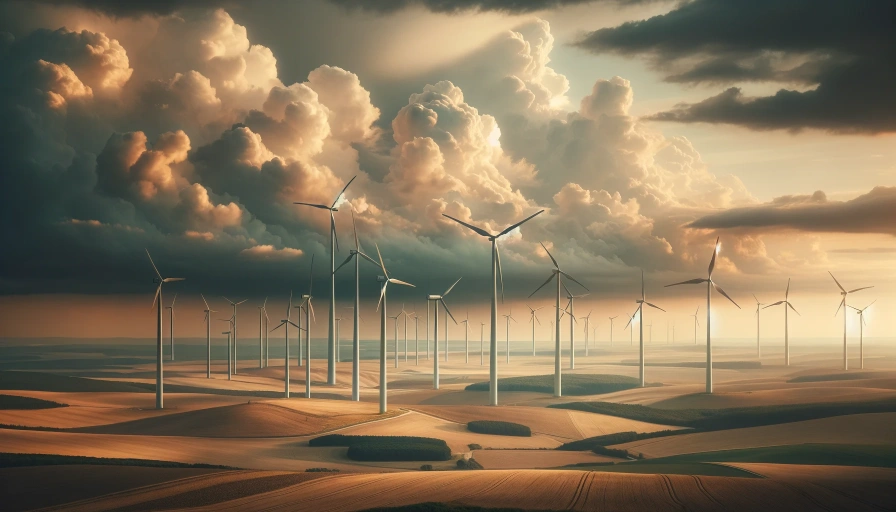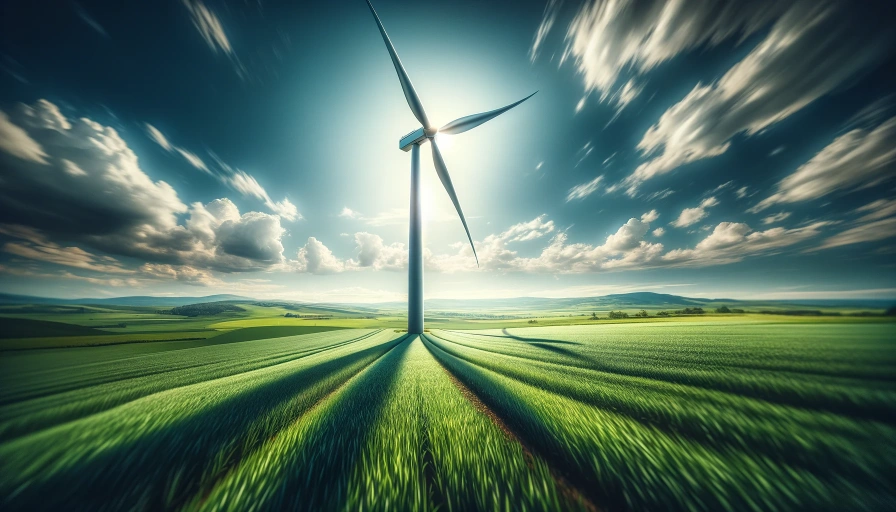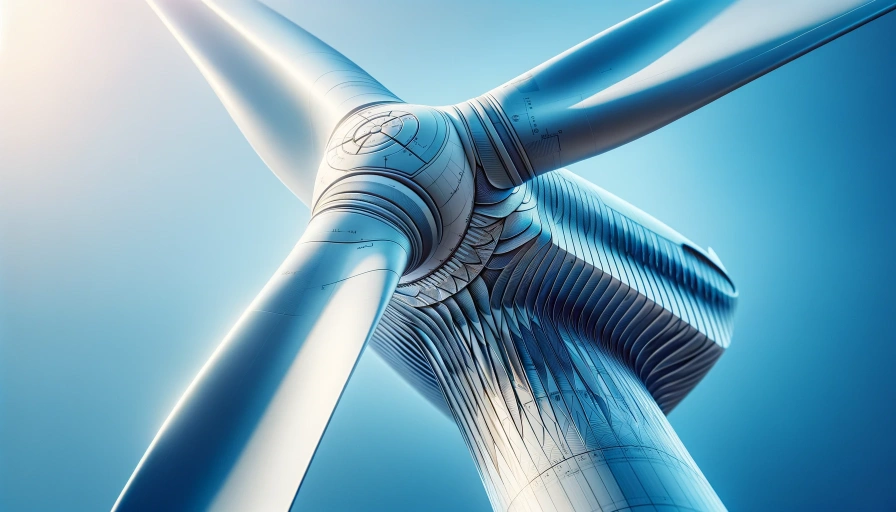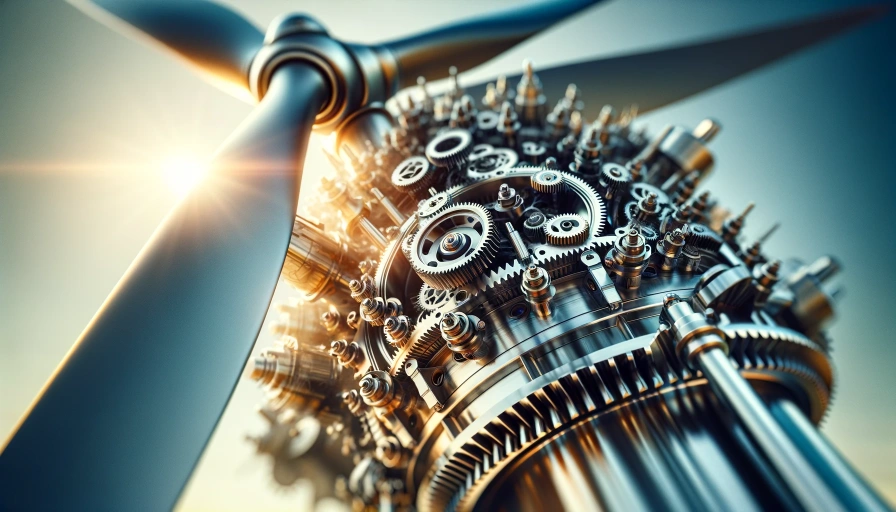Wind energy has become a vital player in the quest for sustainable and clean energy sources. Harnessing the power of the wind, wind turbines have revolutionized electricity generation. But how do these colossal structures convert air into electricity? In this article, we will delve into the science behind wind energy and explore how wind turbines work.
Table Of Content
We invite you to read: “Sustainable Seas: Offshore Wind Energy and Environmental Impact”

The Power of Moving Air
At its core, wind energy is derived from the kinetic energy of moving air. When the wind blows, it carries with it a significant amount of energy due to the motion of air molecules. This kinetic energy can be harnessed and converted into electricity through the use of wind turbines.
The Anatomy of a Wind Turbine
A typical modern wind turbine is a marvel of engineering, consisting of several key components:
1. Blades
The blades are the most visible part of a wind turbine. They are designed to capture the kinetic energy from the wind and convert it into rotational motion. Blade length and shape are carefully engineered to maximize energy capture.
2. Rotor
The blades are attached to a central hub, collectively forming the rotor. As the wind blows, it exerts a force on the blades, causing them to spin. This rotational motion is the first step in the conversion of wind energy into electricity.
3. Gearbox
The gearbox is a crucial component that increases the rotational speed of the rotor. It connects the slow rotation of the rotor to a high-speed generator, allowing for more efficient energy conversion.
4. Generator
The generator is where the real magic happens. It converts the mechanical energy from the spinning rotor into electrical energy. Most wind turbines use electromagnetic generators, which generate electricity through the interaction of magnetic fields and conductive coils.
5. Nacelle
All these components are housed within a protective enclosure called the nacelle, which is mounted atop a tower. The nacelle also contains various control systems and sensors to optimize the turbine’s performance.
We invite you to read: “Blowing Away the Competition: Wind Energy’s Rise to Prominence”

The Science of Energy Conversion
Now that we understand the wind turbine’s components, let’s break down the process of converting wind energy into electricity:
1. Capturing the Wind
When the wind blows, it strikes the turbine’s blades. The shape of the blades is designed to create lift, similar to an airplane wing, allowing them to harness more energy from the wind.
2. Spinning the Rotor
As the wind pushes the blades, they start to rotate the rotor. This rotational motion is transferred to the gearbox, where it is amplified.
3. Increasing Rotational Speed
The gearbox increases the rotational speed of the rotor to match the optimal operating speed of the generator. This step is crucial because the generator works most efficiently within a specific range of rotational speeds.
4. Electricity Generation
The high-speed rotor then drives the generator, which contains a rotor and stator. As the rotor spins, it creates a rotating magnetic field that induces a flow of electricity in the stator’s coils through electromagnetic induction.
5. Electrical Output
The generated electricity is then collected, transformed to a suitable voltage, and sent down the tower to a substation, where it is integrated into the electrical grid for distribution to homes and businesses.
Environmental Benefits of Wind Energy
Wind energy is not only a renewable resource but also a clean one. Unlike fossil fuels, wind power generation produces no greenhouse gas emissions or air pollutants. This makes it a crucial part of global efforts to combat climate change and reduce our reliance on fossil fuels.
We invite you to read: “Challenges and Solutions in Modern Wind Energy Production”

Conclusion
The science behind wind energy is a testament to human ingenuity and the power of nature. Wind turbines are a remarkable technology that efficiently converts the kinetic energy of moving air into electricity, providing a sustainable and clean source of power for our modern world. As we continue to advance in renewable energy technologies, wind energy will undoubtedly play a significant role in shaping a greener and more sustainable future.
FAQs
How do wind turbines work?
Wind turbines work by capturing the energy of moving air with blades, converting it into rotational motion, and ultimately into electricity.
What are the environmental benefits of wind energy?
Wind energy is clean and produces no greenhouse gases, making it an eco-friendly alternative to fossil fuels.
How much electricity can a wind turbine generate?
The amount of electricity generated depends on the turbine’s size, location, and wind speed, but modern turbines can power thousands of homes.
Are wind turbines noisy?
Most modern wind turbines are designed to be relatively quiet, and their noise levels are well within acceptable limits.
You May Also Like
- Wind Energy Unleashed: Unraveling the Technology Driving Wind Turbine Power
- Blowing Towards Sustainability: Wind Energy Leading the Green Movement
- A Green Alliance: Carbon Neutrality’s Co-benefits for Solar and Wind Energy
- Suzlon Energy Shares Garner Interest Amid Impressive Wind Energy Installation Milestone
- Wind Energy Revolution: Discovering Europe’s Top Wind-Generating Countries

